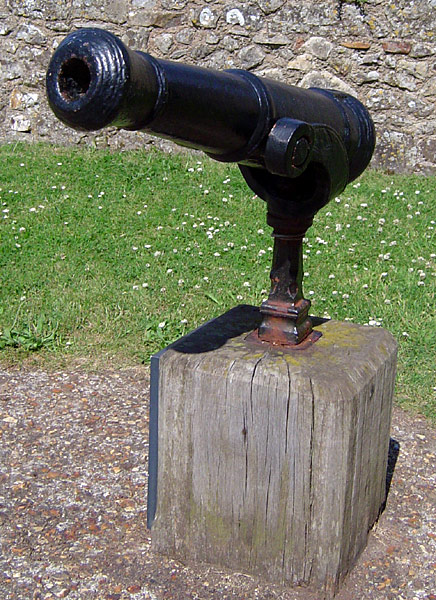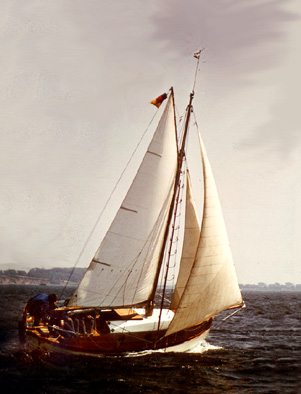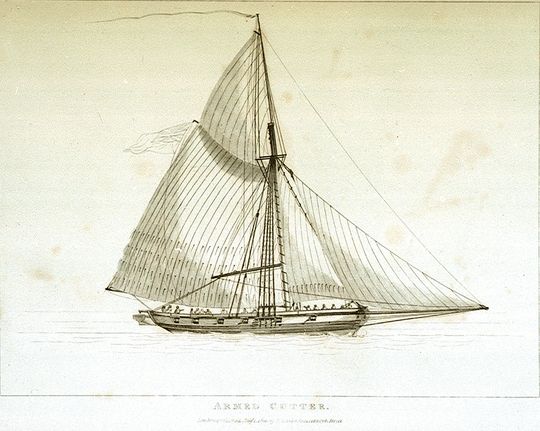|
HMS Hydra (1797)
HMS ''Hydra'' launched in 1797 was a fifth-rate frigate of the Royal Navy. From 1813 to 1817 she served as a troopship. She was sold in 1820. She was built to the design of the captured French frigate ''Melpomene'' (taken in 1794). French Revolutionary Wars ''Hydra'' was commissioned in April 1797 under Captain Sir Francis Laforey. At the action of 30 May 1798, ''Hydra'', in company with the bomb vessel and the cutter , ran aground the French corvette ''Confiante'', which was destroyed. The corvette ''Vésuve'' and an unnamed cutter also ran ashore, but the British were not able to destroy them. On 16 December 1800 ''Traveller'' foundered in the Atlantic Ocean (). ''Hydra'' rescued the crew. ''Traveller'' had been on a voyage from Martinico to London. ''Hydra'' was anchored at the Nore on Sunday 17 May 1801 (as recorded in the journal of Captain Matthew Flinders of ). Napoleonic Wars Under the command of Captain George Mundy, for eight years from October 1802 to Septe ... [...More Info...] [...Related Items...] OR: [Wikipedia] [Google] [Baidu] |
Royal Navy
The Royal Navy (RN) is the United Kingdom's naval warfare force. Although warships were used by Kingdom of England, English and Kingdom of Scotland, Scottish kings from the early medieval period, the first major maritime engagements were fought in the Hundred Years' War against Kingdom of France, France. The modern Royal Navy traces its origins to the early 16th century; the oldest of the British Armed Forces, UK's armed services, it is consequently known as the Senior Service. From the middle decades of the 17th century, and through the 18th century, the Royal Navy vied with the Dutch Navy and later with the French Navy for maritime supremacy. From the mid 18th century, it was the world's most powerful navy until the World War II, Second World War. The Royal Navy played a key part in establishing and defending the British Empire, and four Imperial fortress colonies and a string of imperial bases and coaling stations secured the Royal Navy's ability to assert naval superiority ... [...More Info...] [...Related Items...] OR: [Wikipedia] [Google] [Baidu] |
Matthew Flinders
Captain (Royal Navy), Captain Matthew Flinders (16 March 1774 – 19 July 1814) was a British navigator and cartographer who led the first littoral zone, inshore circumnavigate, circumnavigation of mainland Australia, then called New Holland (Australia), New Holland. He is also credited as being the first person to utilise the name ''Australia'' to describe the entirety of that continent including Van Diemen's Land (now Tasmania), a title he regarded as being "more agreeable to the ear" than previous names such as ''Terra Australis''. Flinders was involved in several voyages of discovery between 1791 and 1803, the most famous of which are the circumnavigation of Australia and an earlier expedition when he and George Bass confirmed that Van Diemen's Land was an island. While returning to Britain in 1803, Flinders was arrested by the French governor at Isle de France (Mauritius). Although Britain and France were at war, Flinders thought the scientific nature of his work would e ... [...More Info...] [...Related Items...] OR: [Wikipedia] [Google] [Baidu] |
Commander-in-Chief, Portsmouth
The Commander-in-Chief, Portsmouth, was a senior commander of the Royal Navy for hundreds of years. The commanders-in-chief were based at premises in High Street, Portsmouth from the 1790s until the end of Sir Thomas Williams's tenure, his successor, Sir Philip Durham, being the first to move into Admiralty House at the Royal Navy Dockyard, where subsequent holders of the office were based until 1969. Prior to World War I the officer holder was sometimes referred to in official dispatches as the Commander-in-Chief, Spithead. The Command extended along the south coast from Newhaven in East Sussex to Portland in Dorset. In 1889 the Commander-in-Chief took as his flagship. History In the late 18th century port admirals began to reside ashore, rather than on board their flagships; the Commander-in-Chief, Portsmouth was provided with a large house at 111 High Street, which was renamed Admiralty House (and which had formerly been home to the Mayor of Portsmouth). In the 1830s Admir ... [...More Info...] [...Related Items...] OR: [Wikipedia] [Google] [Baidu] |
George Montagu (Royal Navy Officer)
Admiral Sir George Montagu (12 December 1750 – 24 December 1829) was a Royal Navy officer, the second son of Admiral John Montagu, and the brother of Captain James Montagu and Lieutenant-Colonel Edward Montagu. Early career In 1763 Montagu entered the Royal Academy at Portsmouth, and was then appointed to with Captain Alan Gardner (afterwards Admiral Lord Gardner), going out to the Jamaica station with the flag of Rear Admiral William Parry. He served in ''Preston'' for three years, before following Captain Gardner to HMS ''Levant''. He finally returned to England in 1770. He passed his lieutenant's examination on 2 October 1770, and on 14 January 1771 was appointed lieutenant of HMS ''Marlborough''. In February he was moved into HMS ''Captain'', going out to North America as the flagship of his father. On 9 April 1773 he was appointed commander in the 18 gun sloop , and on 15 April 1774 (Pay-book of the ''Fowey'') he was posted to . In her he continued on the North Amer ... [...More Info...] [...Related Items...] OR: [Wikipedia] [Google] [Baidu] |
James Saumarez, 1st Baron De Saumarez
Admiral of the Red James Saumarez, 1st Baron de Saumarez (or Sausmarez), GCB (11 March 1757 – 9 October 1836) was an admiral of the British Royal Navy, known for his victory at the Second Battle of Algeciras. Early life Saumarez was born at St Peter Port, Guernsey to an old island family, the eldest son of Matthew de Sausmarez (1718-1778) and his second wife Carteret, daughter of James Le Marchant. He was a nephew of Captain Philip Saumarez and John de Sausmarez (1706-1774) of Sausmarez Manor. He was also the elder brother of General Sir Thomas Saumarez (1760-1845), Equerry and Groom of the Chamber to the Duke of Kent, and afterwards Commander-in-Chief of New Brunswick and of Richard Saumarez (1764-1835), a surgeon and medical author. Their sister married Henry Brock, the uncle of Major-General Sir Isaac Brock and Daniel de Lisle Brock. Many of de Sausmarez's ancestors had distinguished themselves in the naval service, and he entered it as midshipman at the age ... [...More Info...] [...Related Items...] OR: [Wikipedia] [Google] [Baidu] |
Richard Henry Alexander Bennet (junior)
Richard Henry Alexander Bennet (sometimes spelled Bennett) may refer to one of two people: *Richard Henry Alexander Bennet (senior) Richard Henry Alexander Bennet FRS (11 May 1743 – 14 March 1814) was a British landowner who represented Newport in Parliament from 1770 to 1774. Life Richard was the eldest son of Bennet Alexander Bennet and Mary Ash, the daughter of Benjamin ... (1743–1814), British Member of Parliament for Newport, Cornwall * Richard Henry Alexander Bennet (junior) ( 1771–1818), son of the above, British naval captain and Member of Parliament for Launceston {{hndis, Bennet, Richard Henry Alexander ... [...More Info...] [...Related Items...] OR: [Wikipedia] [Google] [Baidu] |
Saint-Malo
Saint-Malo (, , ; Gallo: ; ) is a historic French port in Ille-et-Vilaine, Brittany, on the English Channel coast. The walled city had a long history of piracy, earning much wealth from local extortion and overseas adventures. In 1944, the Allies heavily bombarded Saint-Malo, which was garrisoned by German troops. The city changed into a popular tourist centre, with a ferry terminal serving the Channel Islands of Jersey and Guernsey, as well as the Southern English settlements of Portsmouth, Hampshire and Poole, Dorset. The famous transatlantic single-handed yacht race Route du Rhum, which takes place every four years in November, is between Saint Malo and Pointe-à-Pitre in Guadeloupe. Population The population in 2017 was 46,097 – though this can increase to up to 300,000 in the summer tourist season. With the suburbs included, the metropolitan area's population is approximately 133,000 (2017). The population of the commune more than doubled in 1967 with the me ... [...More Info...] [...Related Items...] OR: [Wikipedia] [Google] [Baidu] |
Swivel Gun
The term swivel gun (or simply swivel) usually refers to a small cannon, mounted on a swiveling stand or fork which allows a very wide arc of movement. Another type of firearm referred to as a swivel gun was an early flintlock combination gun with two barrels that rotated along their axes to allow the shooter to switch between rifled and smoothbore barrels. Swivel guns should not be confused with pivot guns, which were far larger weapons mounted on a horizontal pivot, or screw guns, which are a mountain gun with a segmented barrel. An older term for the type is peterero (alternative spellings include "paterero" and "pederero"). The name was taken from the Spanish name for the gun, pedrero, a combination of the word piedra (stone) and the suffix -ero (-er), because stone was the first type of ammunition fired. Configuration Swivel guns are among the smallest types of cannon, typically measuring less than in length and with a bore diameter of up to . They can fire a variet ... [...More Info...] [...Related Items...] OR: [Wikipedia] [Google] [Baidu] |
HM Hired Cutter Rose
Between 1793 and 1805, five cutters served the British Royal Navy as hired armed vessels under the designation HM hired cutter ''Rose'': French Revolutionary Wars ''Rose'' (1793–1801) *''Rose'', of 55 tons ( bm) and armed with eight 3-pounder guns, served under contract between 22 March 1793 and 28 November 1801. On 15 September 1794, a court martial acquitted Lieutenant Walker of ''Rose'' of charges that he had taken money from merchants for protection of the trade between Leghorn and Bastia. On 26 February 1795 ''Rose'' and Lieutenant Walker captured the French privateer ''Terrible''. On 28 September 1795 ''Rose'', Captain William Walker was passing Capraria on her way from Leghorn to Bastia when at 4:30 am she encountered three French lateen-rigged privateers. ''Rose'' had thirteen men and a boy on board, and each of the privateers probably had 40 or more men. ''Rose'' was carrying three passengers, one a King's Messenger, and two ladies, and £10,000 in specie. Lieu ... [...More Info...] [...Related Items...] OR: [Wikipedia] [Google] [Baidu] |
Cutter (ship)
A cutter is a type of watercraft. The term has several meanings. It can apply to the rig (or sailplan) of a sailing vessel (but with regional differences in definition), to a governmental enforcement agency vessel (such as a coast guard or border force cutter), to a type of ship's boat which can be used under sail or oars, or, historically, to a type of fast-sailing vessel introduced in the 18th century, some of which were used as small warships. As a sailing rig, a cutter is a single-masted boat, with two or more headsails. On the eastern side of the Atlantic, the two headsails on a single mast is the fullest extent of the modern definition. In U.S. waters, a greater level of complexity applies, with the placement of the mast and the rigging details of the bowsprit taken into account so a boat with two headsails may be classed as a sloop. Government agencies use the term "cutter" for vessels employed in patrolling their territorial waters and other enforcement activities. ... [...More Info...] [...Related Items...] OR: [Wikipedia] [Google] [Baidu] |
Hired Armed Vessels
During the eighteenth and nineteenth centuries the Royal Navy made use of a considerable number of hired armed vessels. These were generally smaller vessels, often cutters and luggers, that the Navy used for duties ranging from carrying and passengers to convoy escort, particularly in British coastal waters, and reconnaissance.Winfield (2008), p.387. Doctrine The Navy Board usually hired the vessel complete with master and crew rather than bareboat. Contracts were for a specified time or on an open-ended monthly hire basis. During periods of peace, such as the period between the Treaty of Amiens and the commencement of the Napoleonic Wars, the Admiralty returned the vessels to their owners, only to rehire many on the outbreak of war. The Admiralty provided a regular naval officer, usually a lieutenant for the small vessels, to be the commander. The civilian master then served as the sailing master. For purposes of prize money or salvage, hired armed vessels received the sa ... [...More Info...] [...Related Items...] OR: [Wikipedia] [Google] [Baidu] |






